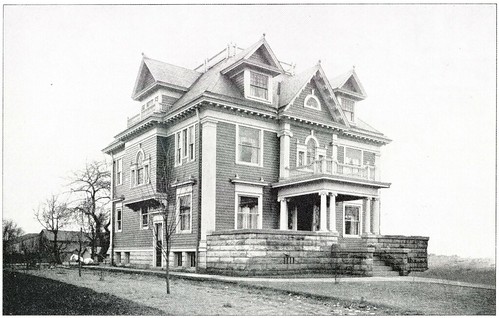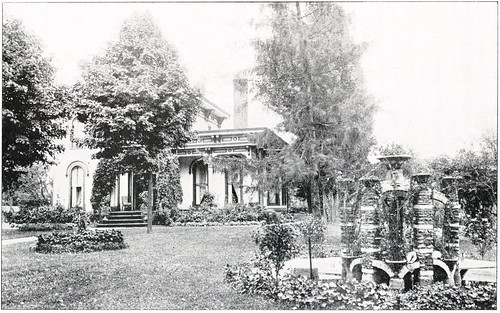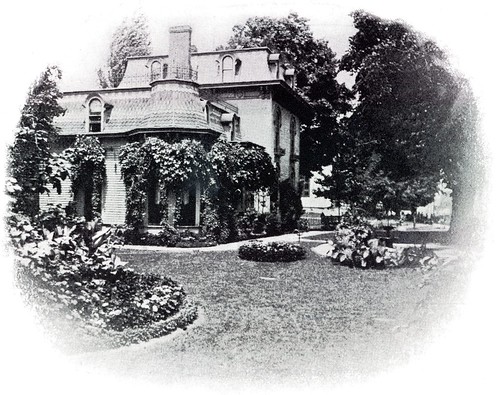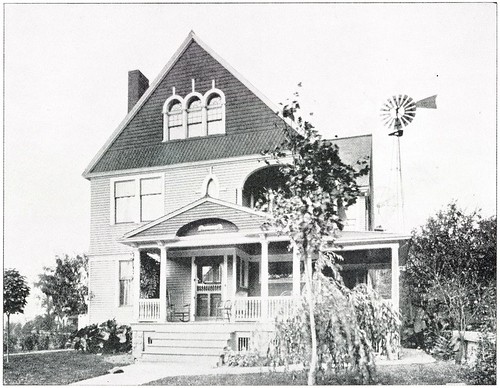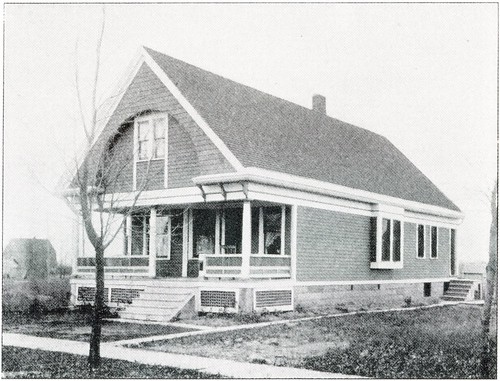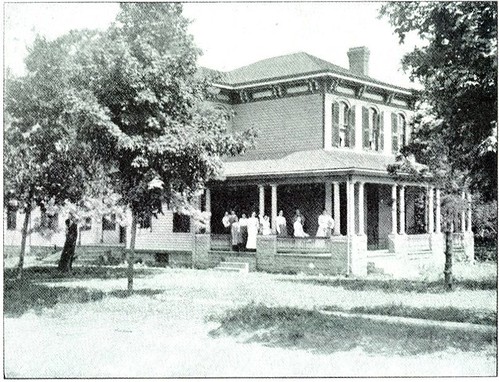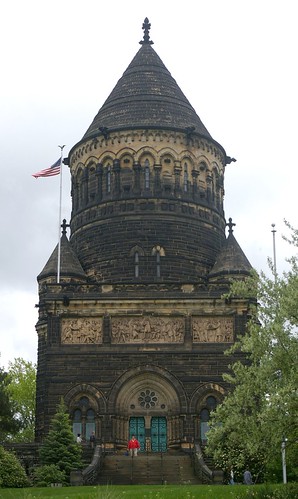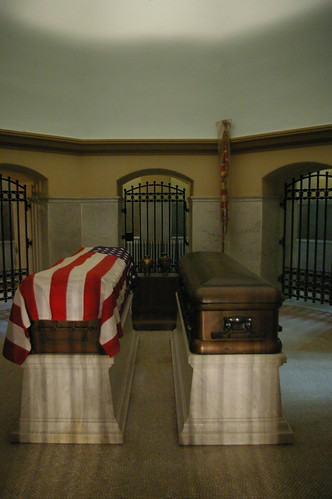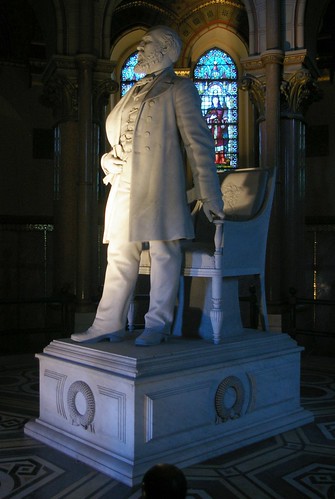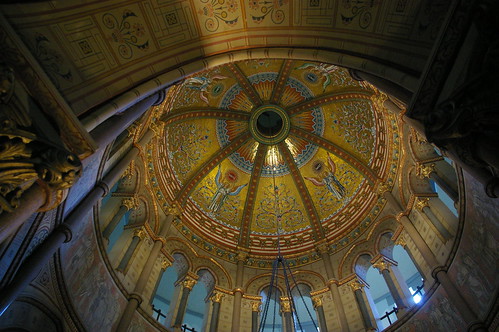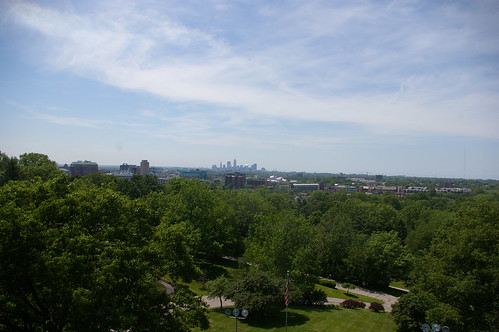
The structure was designed by Marcel Breuer who was born in Hungary in 1902. He is considered one of the masters of Modernism, and he displayed interest in modular construction and simple forms. Breuer designed the 1971 expansion of the Cleveland Museum of Art. Brock Weir of the Cleveland Trust Bank was a trustee of the art museum, and he recruited Breuer to design what at that time was called The Cleveland Trust Tower. The following photo provided by clevelandskyscrapers.com illustrates how it was originally designed to have twin towers flanking the bank's 1908 rotunda.

Although my instructor defended the importance of the Ameritrust Tower during our class walking tour that day, she did not elaborate on her involvement with it. It was until a few weeks later on facebook that I stumbled across her name as someone who was being hailed a "savior" of the Breuer building. I had to learn more about the preservation efforts, as so few are successful here in Greater Cleveland.
Sally was kind enough to grant me an interview laying out the history behind Marcel Breuer's only constructed skyscraper.
Marcel was known for using an architectural style called “Brutalism.” Can you expand on that concept, and would you consider the Ameritrust tower to be of this style of architecture?
The short answer to the second half of your question is “yes, the Ameritrust Tower is an example of Brutalism.” Expanding on the concept will take a bit longer.
The term “brutalism” comes from the French phrase “béton brut” which translates into English as “raw concrete.” Many 20th century Modernists worked with concrete – both as a structural material and as a façade facing. Concrete’s inherent plasticity made it a favorite material for architects who were interested in the sculptural aspects of buildings. Brutalist buildings are characterized by their monochromatic palette; their materials are unadorned - the beauty comes from the natural expression of the concrete, the stone, the glass and the steel. The Ameritrust Tower shares these traits. Its façade creates a pattern that serves as a backdrop for the Cleveland Trust Rotunda building, a neo-classical work by architect George Post. The pre-cast concrete window surrounds create the modulated pattern and are dimensioned to provide shade from the sun during the hot summer months and to allow sunlight to enter during the winter.
Did you see the tower being built and if so, what did you think about it as it was going up? If not, what was your impression of the building when you saw it for the first time?
The first time I saw the building I was definitely intrigued by the structure and its form. I was - and continue to be - a Breuer fan.
The building has been vacant since 1992, when did preservation efforts begin and why?
The efforts to save the building began when Cuyahoga County announced its plans to raze the tower and build a new county administration building on the site. The project would have saved the rotunda building, which is on the National Register of Historic Places. Steven Litt wrote extensively on this issue, and at first, he was the lone public voice in favor of saving the building. Also – at just 39 years old, it hasn’t reached the magic 50 years required before it can be considered for landmark status.
What types of efforts took place to save the building, and how were you involved? What other groups were involved and what was the final outcome?
A friend and colleague, architect David Ellison organized a demonstration to save the building. I went downtown to be supportive, and we marched, chanted and held up signs for about 2 hours at the end of a workday. The goal was to bring some attention to the issue. A few passers by asked questions, and some drivers looked on inquisitively, but we were a small group and only had a marginal impact. David and I had put together an exhibit for the first Ingenuity Festival, and I said in passing that it was a shame that the new festival was only 2-plus months away, because we could have organized a competition to solicit ideas about saving the structure. Then, of course, we were stuck with this concept – so we mobilized quickly, sent out calls for participation and invited jurors to review the work. We called the exhibit “What Would you do to the Breuer Tower?”
I’ve read that there was a large amount of asbestos to be removed from the building. What were the implications there as far as the effect that would have on the building’s demise?
It’s true, there is a great deal of asbestos in the building. The issue must be addressed whether it remains standing or is torn down, so the cost is a wash. If the building is reused, the asbestos can be encapsulated.
Why is it so important to save this structure when so many people believe it to be an eyesore?
There are several reasons to save the structure:
• Styles come and go – and it’s too early to make any decisive evaluations at this time. People in the Renaissance hated Gothic architecture. Today, we are grateful to have examples of both.
• Cleveland does not have many buildings by world-class architects, and having 2 Breuer buildings, the tower and the addition to the art museum, makes the city an important destination for Breuer scholars, architects and other interested parties.
• Breuer was an important mid-century modern architect, and this tower is the only one of the high-rise office buildings he designed that was built. His portfolio includes a wide range of building types: homes, museums (the Whitney Museum, NYC), government buildings (HUD Headquarters, Washington DC), university buildings (U of Massachusetts Campus Center, Amherst, Massachusetts), religious structures (St. Francis de Sales Church, Muskegon, Michigan). Additionally, he designed some very significant pieces of furniture, in particular the Cesca and Wassily chairs. He was the first to bend tubular steel for his furniture – and he got the idea from seeing the handlebars on his son’s bicycle.
• This tower, like many throughout the nation, has embedded energy – i.e.: the “bricks and mortar” used to build the structure are already in place, and the energy used to create the materials has already been expended. From a sustainability standpoint, there’s no question but to reuse an existing building, even when the new building is being touted as “green.” There’s no way that a new building can have less of an impact on the environment that an existing on. Also, even if it costs the same to renovate an existing building as it does to raze and build a new one, it is always better for the local economy to renovate. The monies used in renovation largely go toward labor, which stays in the immediate area. In a new building, much of the expense goes for the materials and those suppliers are often not in the local area.
What do you think the future holds for this structure, and if anything, what would you like to see the building be used for?
I thought the idea of a hotel, with the rotunda as the lobby and the tower for the rooms, was a great idea. I hope that the building is saved – although not “preserved.” I believe it can be adapted to a new and useful purpose – and I would be thrilled to be part of the process. We may need to wait until the economy recovers before we see how the saga unfolds.
The county currently owns the site, and is trying to sell it for what they paid along with improvements costs. According to this article in the Plain Dealer, they likely will not receive the current asking price.
I certainly agree that the building should be saved. It's not the prettiest, but the "Brutalism" style is quite appropriate for Cleveland. Clevelanders are tough and resilient, and so is this structure. Before long, we will all evolve into something spectacular.

